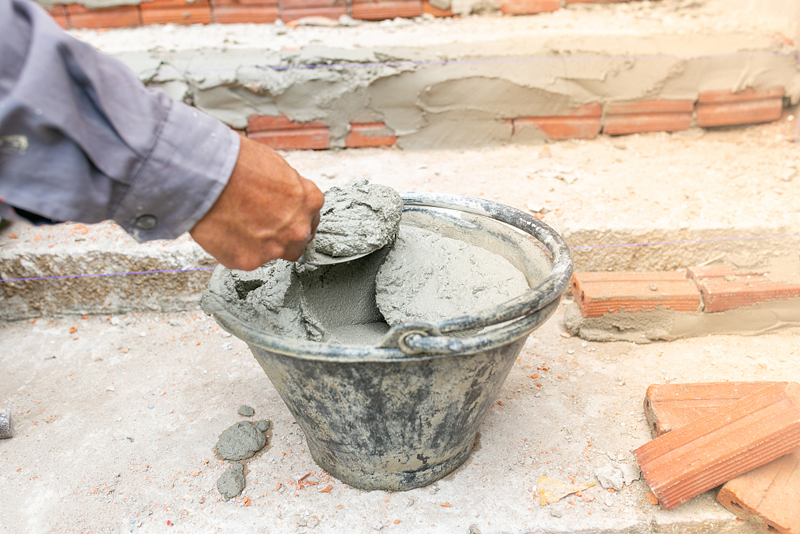AnxinCel® cellulose ether HPMC/ MHEC products can make the cement fully hydrated, significantly increase the bonding strength, and can also increase the tensile bonding strength and shear bonding strength of the hardened mortar. Meanwhile, it can significantly improve workability and lubricity, greatly improving the construction effect and improving work efficiency.
Cellulose ether for Masonry Mortar
Masonry mortar refers to mortar in which bricks, stones, and block materials are built into masonry. It plays the role of structural block, concrete and force transmission, and is an important part of masonry cement slurry. Cement bricks are used to build masonry with high requirements for cement environment and strength. Brick lintels generally use cement mortar with a strength grade of 5 to M10; brick foundations generally use cement mortar that does not belong to M5; low-rise houses or bungalows can use lime mortar; simple building materials, lime clay mortar, can be used.
Cement is the main cementing material of mortar. Commonly used cements include cement, slag cement, pozzolan cement, fly ash cement and composite cement, etc., which can be selected according to the design requirements, masonry bricks and cement environmental conditions. Strong cement can meet the requirements.

The strength grade of cement used in cement sand should not be greater than 32.5; the strength grade of cement used in cement mixed mortar should not be greater than 42.5. If the cement strength level is too high, you can add some mixed materials. For some special purposes, such as configuring the joints and joints of components, or for structural reinforcement and repair of cracks, expansive cement should be used. Cementitious materials used in masonry mortar include cement and lime. The choice of cement varieties is the same as that of concrete. The cement grade should be 45 times the strength grade of the mortar. If the cement grade is too high, the amount of cement will be insufficient, resulting in poor water retention. Lime paste and slaked lime are not only used as cementing materials, but more importantly, make the mortar have good water retention. Fine aggregate Fine aggregate is mainly natural sand, and the prepared mortar is called ordinary mortar. The clay content in the sand should not exceed 5%; when the strength grade is less than m2.5, the clay content should not exceed 10%. The maximum particle size of sand should be less than 1/41/5 of the thickness of the mortar, generally not more than 2.5 mm. As the mortar for grooves and plastering, the maximum particle size does not exceed 1.25 mm. The thickness of the sand has a great influence on the amount of cement, workability, strength and shrinkage.
| Recommend Grade: | Request TDS |
| HPMC AK100M | Click here |
| HPMC AK150M | Click here |
| HPMC AK200M | Click here |